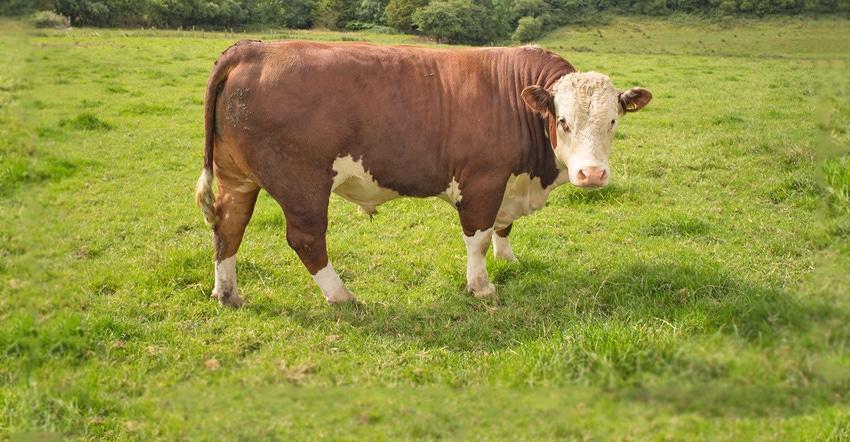May 31, 2017

By Heather Schlesser
Knowing what you are looking at when you open a sire catalog is important if you are going to select the bull that works best on your farm. While bulls are still common on many beef operations, more and more producers are experimenting with artificial insemination.
The first thing you need to know before even opening a sire catalog are the goals of your farm. If you do not know what characteristics you want in the end product, it is hard to start shopping.
So Step 1: Know what you are looking for — what are your goals?
Once you’ve identified your goals, how do you proceed with understanding sire summaries? Sire summaries have been developed to aid a producer in selecting the right sire. Sire summaries are updated on a regular basis and provide information on traits that are economically important to cattle producers. The values on the sire summary are expected progeny differences, or EPDs. These numbers predict the genetic quality of future offspring or progeny of a particular bull. The EPD is the degree of difference between the progeny of the bull and the progeny of the average bull of the breed in the trait being measured.
New breed averages are published with each sire catalog, so you have to compare bulls within one sire catalog, not across, as the genetic base will be different. The EPD is given as a plus or minus value. For example, an EPD for yearling weight of +65 indicates that the progeny of this bull should average 65 pounds more at 365 days of age compared to progeny of the average bull of the breed at the same base year.
EPDs are a prediction based on averages of the breed; keep in mind, bulls with high EPDs for selected traits will produce some calves that are not better than the average of the breed. On the other hand, bulls with low EPDs for selected traits will sire some calves better than the breed average. However, the overall performance of the progeny of low EPD bulls will be lower than the breed average.
It used to be that you could not compare EPDs across breeds. This was partly due to the differences in selection emphasis among breeds. In recent years, the U.S. Meat Animal Research Center has started calculating across breed adjustment factors.
USMARC is currently calculating these adjustment factors for 18 breeds for growth and carcass traits including: birth weight, weaning weight, yearling weight, maternal milk, marbling score, rib-eye area and fat thickness. These factors can be used to adjust the EPD to a common Angus base. USMARC updates these adjustment values on an annual basis to account for genetic change that has occurred. A current list of adjustment factors can be found online.
If you want to compare a Hereford bull’s EPD for birth weight to an Angus bull’s EPD for birth weight, you would need to use 2.3 as the adjustment factor. If the Herford bull had a birthweight EPD of 5.3, then on an Angus base, the birth weight would be 7.6.
Schlesser is the Marathon County Extension dairy and livestock agent.This column is provided by the University of Wisconsin Extension’s Wisconsin Beef Information Center. Learn more at fyi.uwex.edu/wbic.
You May Also Like




